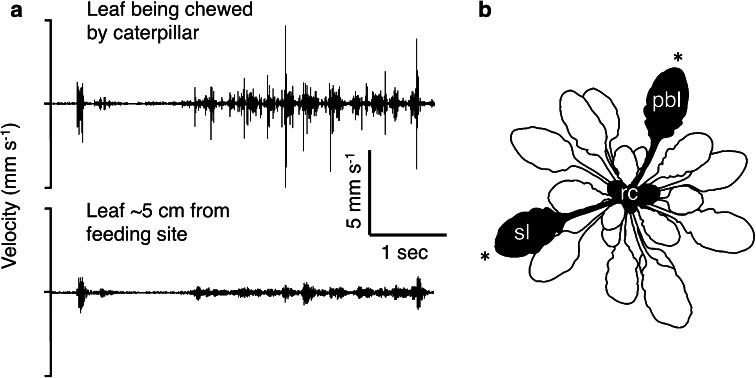Fig. 1.
a Vibrations produced by a feeding P. rapae caterpillar on A. thaliana, recorded simultaneously (using two laser vibrometers) on the fed-upon leaf and a second leaf on the opposite side of the plant. These leaves correspond to the leaves labeled ‘pbl’ and ‘sl’ in the playback design shown in the next panel. b Sampling design for the experiments. An older leaf was selected for caterpillar recordings and vibrational playback (pbl), to allow attachment of an actuator with minimal effect on the rest of the plant. For the plants that experienced herbivory (all of the plants in experiment 1, and half of the plants in experiment 2), caterpillars were confined in clip cages placed on the playback leaf and a same-age leaf on the opposite side of the plant (sl). The two leaves experiencing herbivory 24 or 48 h after the experimental treatment are marked with an asterisk. The young unexpanded leaves in the rosette center (rc) were also sampled for leaf chemistry, but did not experience herbivory

